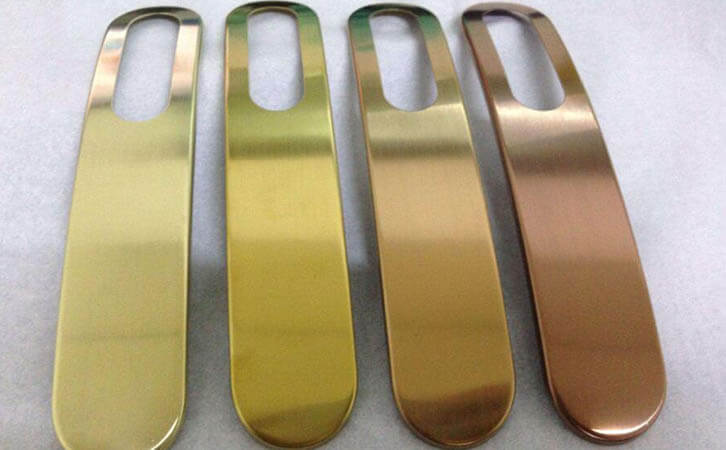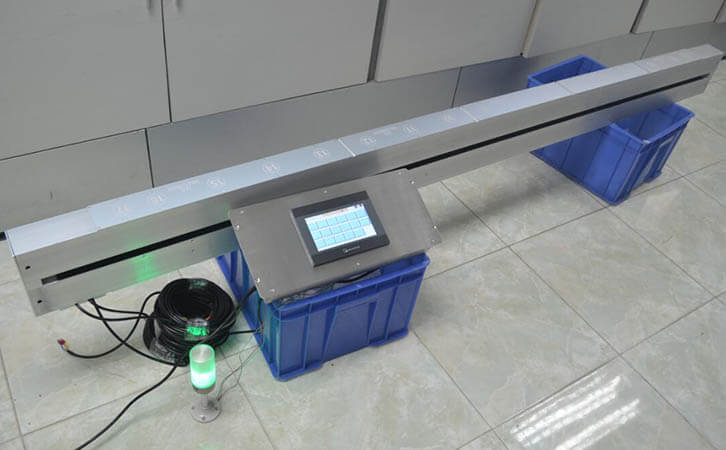Application of Vacuum Coating and Thickness Measurement
The film layer is prepared in a vacuum and includes a single crystal or a compound film of crystalline metal, semiconductor, insulator. Although chemical vapor deposition also uses vacuum methods such as reduced pressure, low pressure, or plasma. Vacuum coating generally refers to the physical deposition of thin films. There are three forms of vacuum coating, namely evaporation coating, sputtering coating and ion plating.

Application of vacuum coating
Vacuum coating technology first appeared in the 1930s, and industrial applications began to appear in the 1940s and 1950s. Industrialized large-scale production began in the 1980s. It has been widely used in electronics, aerospace, packaging, decoration, bronzing and other industries. Vacuum coating refers to the deposition of a metal or metal compound on the mateiral surface (usually a non-metallic material) in the form of a vapor phase in a vacuum environment. The coating is often a metal thin film, it is also called vacuum metallization. In the broad sense, vacuum coating also includes non-metallic functional films such as vacuum-evaporated polymers on the surface of metal or non-metallic materials. Of all the materials to be plated, plastic coating is common, followed by paper coating. Compared with metals, ceramics, wood and other materials, plastics have the advantages of sufficient sources, easy performance control and convenient processing. Therefore, a wide variety of plastics or other polymer materials are used as engineering decorative structural materials. However, most plastic materials have defects such as low surface hardness, gorgeous appearance and low abrasion resistance. For example, a thin metal film is deposited on the plastic surface to give the plastic a metallic appearance. A suitable metal source can greatly increase the wear resistance of the material surface . It can also expand the decorative and application range of plastics.
Nowadays, vacuum coating is applied in a wide range of industries. Coating products involve various items in daily life. Among them, there is a high requirement for the thickness uniformity of optical film and glass coating. Because the film thickness is very thin, the vacuum coating process has high requirements. Currently there are professional vacuum coating thickness measuring systems on the market that can continuously monitor the thickness and quality of thin films for vacuum coating. The uniformity of the coating is detected by the optical performance of the coating. Linshang LS152 vacuum coating thickness measuring system is such an instrument. LS152 vacuum coating thickness measuring system is suitable for measuring the thickness of vacuum coating products. And it is suitable for the testing of vacuum-plated optical film products that can transmit light or translucent. Such as solar film, architectural glass film, door and window insulation film, evaporated aluminum film and so on.
The functions of vacuum coating are multifaceted, which also determines that its application is very rich. In general, the main functions of vacuum coating include giving a high metallic luster and mirror effect to the surface of the plated part, making the film layer with excellent barrier properties on the film material, providing excellent electromagnetic shielding and conductive effects.
- Linshang Insulated Glass Unit Measuring Tools
- Spectacle lens anti-blue light detection---blue-violet light transmittance meter
- Measurement of Optical Density
- Difference of LS116 Transmission & LS117 OD Meter
- Difference between LS116 and LS117 Light Transmittance Meter
- What’s the Difference Between Point Light and Parallel Light Transmittance Meter
